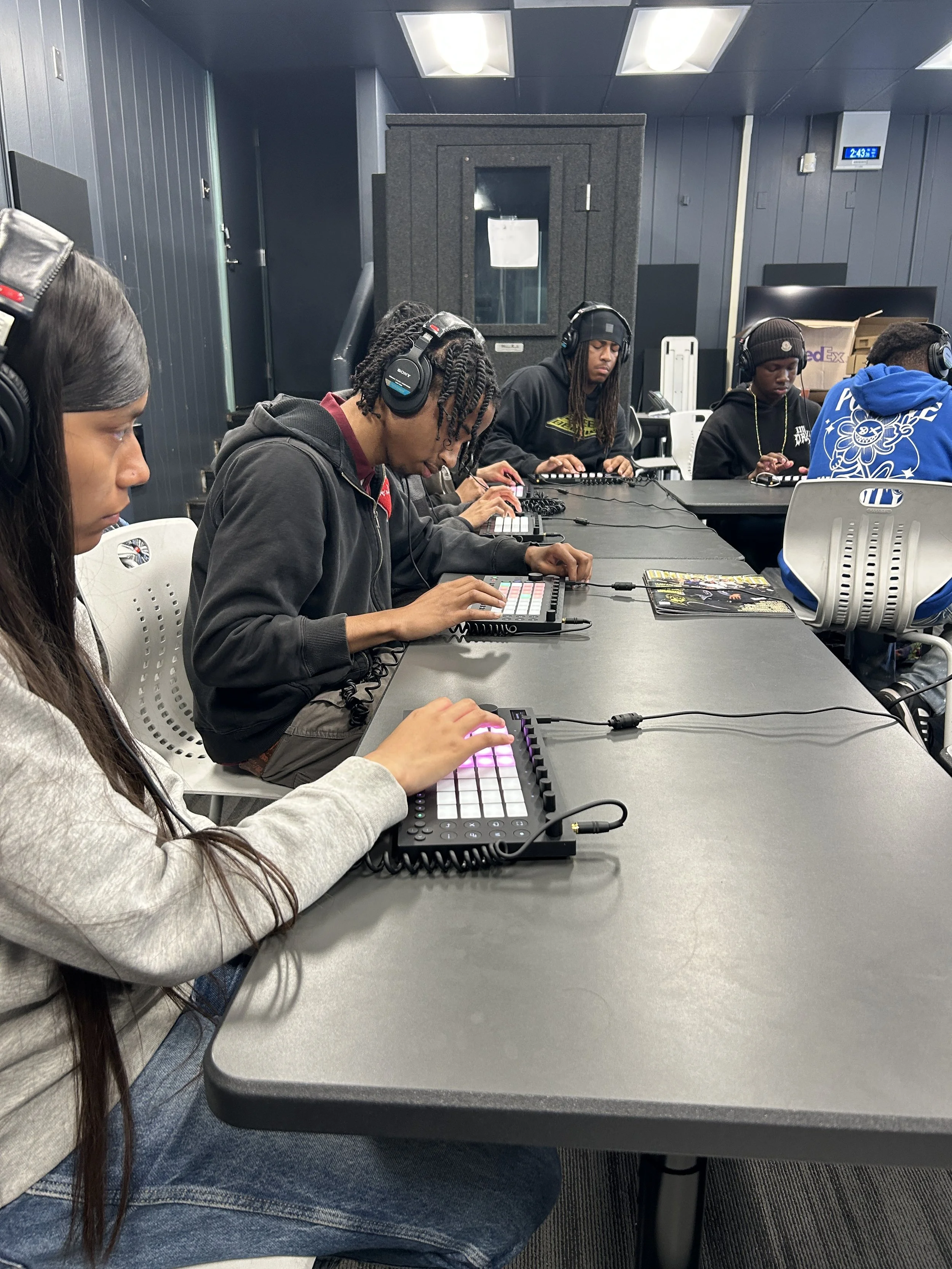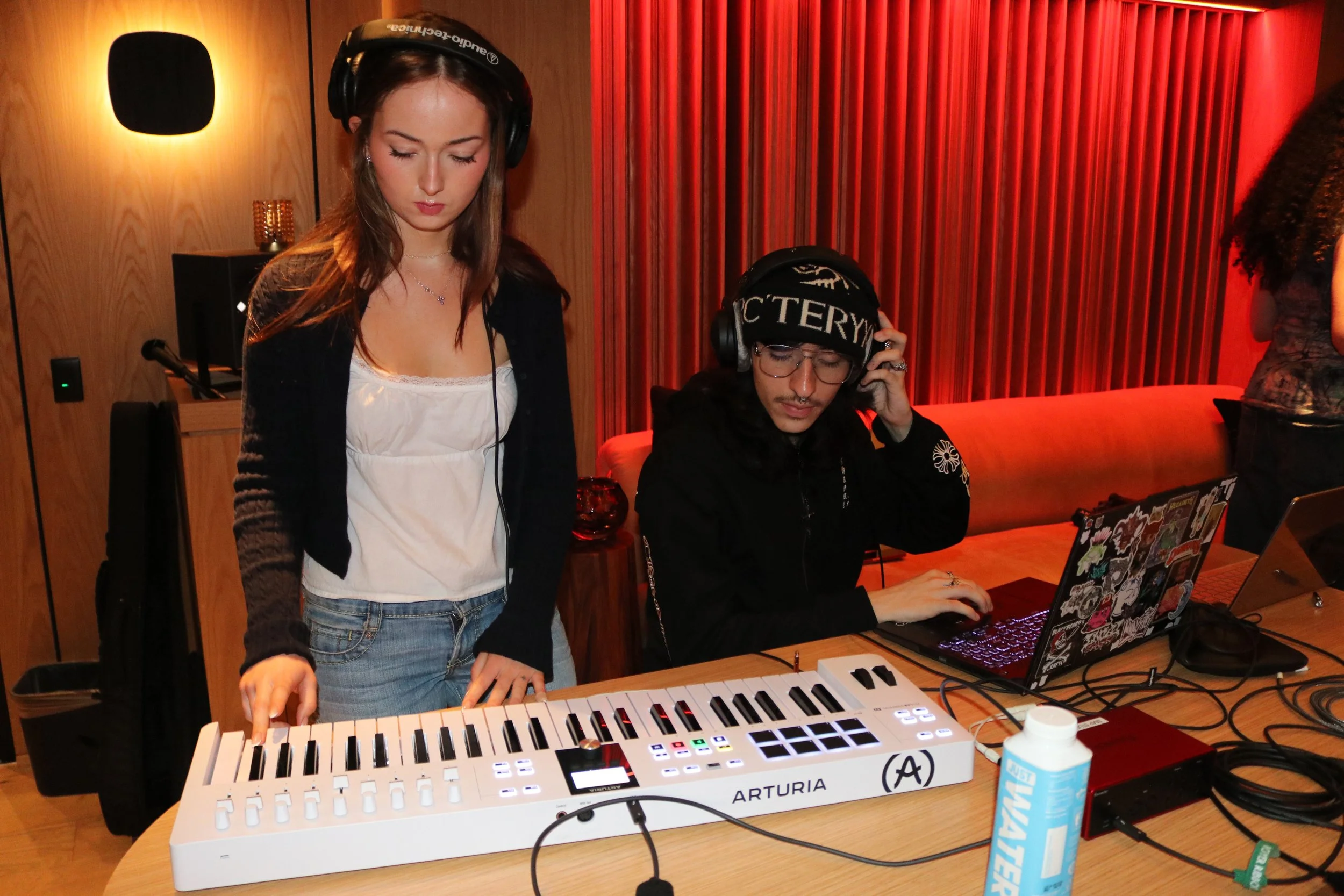Why We Should Teach the Music Our Students Actually Listen To
Have you ever noticed how the same students who zone out in music class come alive the moment the bell rings? You’ll catch them in the halls making playlists for each other, learning TikTok dances to their new favorite song, making beats on their phones and freestyling with their friends. They clearly love music, but getting them to love music class is a different story. This disconnect isn’t rebellion or disinterest. More often than not, it’s about relevance.
Music Is Identity, Not Just Instruction
Music is more than theory and technique - it’s culture, emotion, and identity. For young people especially, music is a lifeline. It’s how they express who they are, connect with their peers, and make sense of a world that often feels overwhelming. During these confusing formative years, music is a grounding force that reflects students’ feelings and affirms their complex experiences.
Think back to the music that shaped you as a teen - the song you taught yourself on guitar, the mixtape you made for your crush, the band that helped spark a new friendship. You probably still feel something when you hear those songs today. That emotional connection is powerful, and it’s exactly what we tap into when we center students’ experiences, voices, and cultural references in the classroom.
When we treat music education as a space for identity exploration, we shift the focus from simply hitting the right notes to truly feeling the music. We help foster a creative space where students have the freedom to explore their interests without judgement, opening the door to trust, motivation, and deeper learning. Students are more likely to engage, retain information, and take creative risks when they feel seen and respected, and when the repertoire reflects their reality.
Career Readiness
The idea that music careers only exist in performance or teaching is long outdated. Today, most jobs in the music industry require music technology literacy, compositional skills, collaboration, and a strong understanding of contemporary music genres and tools.
From behind-the-scenes roles in production & engineering to entrepreneurial paths in content creation, publishing, and music business, students entering the music industry will need to be versatile, tech-savvy, and creatively adaptable. Even students who dream of being orchestral performers, conservatory-trained composers, or professional session players will need to know how to use a DAW to sketch out arrangements and record their work.
YPG’s curricula were designed to help you engage and prepare students for lasting careers in the music industry. Our music production and composition curricula are UC A-G credit-approved, CTE standards-aligned, project-based, and refined in schools across the country. We also provide support every step of the way with a variety of teaching resources so you can deliver a stress-free, engaging classroom experience.
How to Choose Music That Resonates
Here are some simple but powerful shifts to help incorporate the music your students love into your classroom.
1. Take Input
Ask your students what they’re listening to. Have them submit favorite songs or artists. A quick playlist share at the start of the week or even the year can spark meaningful dialogue. Many contemporary songs can be used to teach the same theory concepts you want to cover - just through a lens that feels personal and current.
2. Incorporate Variety
If you’re stuck, the Top 40 is a good place to start, but remember that not every student listens to the same thing. It’s essential to represent different genres, cultures, and styles. Different genres also naturally align with different concepts. For example, a popular Reggaeton or Afrobeats song could be used to teach rhythm and syncopation. You could analyze a singer-songwriter’s melodic and harmonic phrases. You could even team up with the English teacher to analyze a rapper’s creative lyrics and rhyme scheme as part of an interdisciplinary project.
3. Original Music is the Key
The most transformative shift you can make is to center the creation of original music. Rather than focusing solely on covers or classical pieces, invite students to write, produce, and share their own songs and beats. This encourages kinesthetic learning, emotional expression, and cross-genre exploration - all while reinforcing foundational music concepts like:
Theory, structure, and rhythm
Musical form and arrangement
Collaborative skills and learning how to give and receive feedback
YPG has seen this play out in real time at our annual SoCal Beat Battle. Every year we team up with Soundtrap to host a competition for middle and high school students in Southern California. Last year, students submitted more than 700 original tracks! From this incredible pool of talent, 18 honorable mentions and nine finalists emerged across the producer, instrumentalist and vocalist categories. Competitions like these give students voice, agency, and real-world context. And they’re fun!
Rewriting the Score
The music industry is always changing. Culture shifts overnight. Technology is transforming how we create, collaborate, and share. What was cutting-edge five years ago is now standard, and what’s standard today will be obsolete tomorrow.
But here’s the good news: our students are already tapped in. They’re creative, curious, and more tech-savvy than ever. Many of them are making beats on their phones before they even step into your class. What they need from us isn’t just instruction - it’s access. It’s validation. It’s tools, guidance, and permission to experiment.
When we give them the space to explore modern tools and musical forms, we’re not just teaching music - we’re teaching adaptability, collaboration, and creative confidence. That’s what sets them up for success in the real world.
So let’s trade outdated repertoire for relevance.
Let’s give our students the confidence, creativity, and agency to realize their own ideas.
And let’s show them that their voices and their music belong in the classroom. Or better yet, let’s show them that the classroom belongs in the larger music culture and industry.
Elevate your school’s music program with YPG’s innovative music technology curricula




